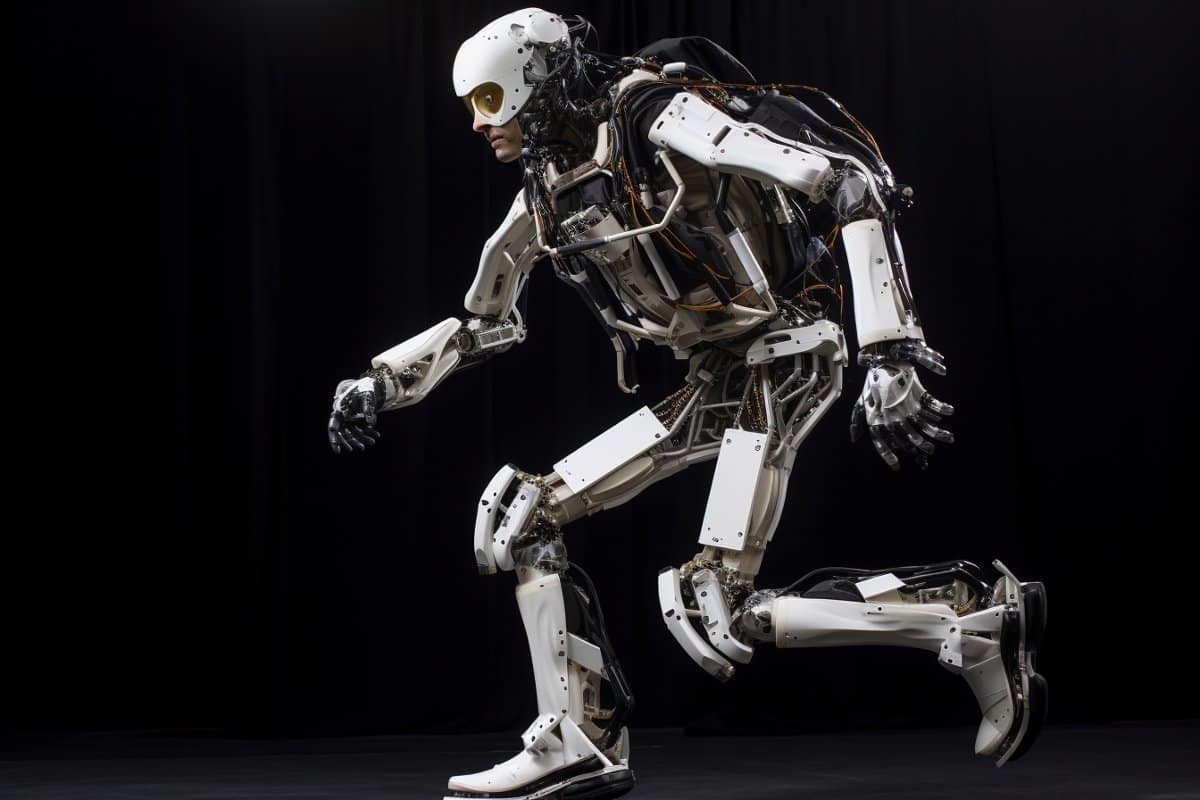Summary: Researchers achieved a significant advancement in robotics by replicating human-like variable speed walking using a musculoskeletal model. This model, steered by a reflex control method akin to the human nervous system, enhances our understanding of human locomotion and sets new standards for robotic technology.
The study utilized an innovative algorithm to optimize energy efficiency across various walking speeds. This breakthrough paves the way for future innovations in bipedal robots, prosthetics, and powered exoskeletons.
Key Facts:
- The Tohoku University team successfully replicated human walking mechanisms in a robotic model, reflecting the complexity of the human musculoskeletal and nervous systems.
- An advanced algorithm was developed to optimize energy efficiency, crucial for replicating the natural, variable-speed walking of humans.
- This research holds immense potential for advancements in bipedal robots, prosthetics, and powered exoskeletons, improving mobility solutions and everyday robotics.
Source: Tohoku University
We typically don’t think about it whilst doing it, but walking is a complicated task. Controlled by our nervous system, our bones, joints, muscles, tendons, ligaments and other connective tissues (i.e., the musculoskeletal system) must move in coordination and respond to unexpected changes or disturbances at varying speeds in a highly efficient manner. Replicating this in robotic technologies is no small feat.
Now, a research group from Tohoku University Graduate School of Engineering has replicated human-like variable speed walking using a musculoskeletal model – one steered by a reflex control method reflective of the human nervous system. This breakthrough in biomechanics and robotics sets a new benchmark in understanding human movement and paves the way for innovative robotic technologies.

Details of their study were published in the journal PLoS Computational Biology on January 19, 2024.
“Our study has tackled the intricate challenge of replicating efficient walking at various speeds – a cornerstone of the human walking mechanism,” points out Associate Professor Dai Owaki, and co-author of the study along with Shunsuke Koseki and Professor Mitsuhiro Hayashibe.
“These insights are pivotal in pushing the boundaries for understanding human locomotion, adaptation, and efficiency.”
The achievement was thanks to an innovative algorithm. The algorithm evolved beyond the conventional least squares method and helped devise a neural circuit model optimized for energy efficiency over diverse walking speeds.
Intensive analysis of these neural circuits, particularly those controlling the muscles in the leg swing phase, unveiled critical elements of energy-saving walking strategies. These revelations enhance our grasp of the complex neural network mechanisms that underpin human gait and its effectiveness.
Owaki stresses that the knowledge uncovered in the study will help lay the groundwork for future technological advancements.
“The successful emulation of variable-speed walking in a musculoskeletal model, combined with sophisticated neural circuitry, marks a pivotal advancement in merging neuroscience, biomechanics, and robotics. It will revolutionize the design and development of high-performance bipedal robots, advanced prosthetic limbs, and state-of-the-art- powered exoskeletons.”
Such developments could improve mobility solutions for individuals with disabilities and advance robotic technologies used in everyday life.
Looking ahead, Owaki and his team hope to further refine the reflex control framework to recreate a broader range of human walking speeds and movements. They also plan to apply the insights and algorithms from the study to create more adaptive and energy-efficient prosthetics, powered suits, and bipedal robots. This includes integrating the identified neural circuits into these applications to enhance their functionality and naturalness of movement.
About this robotics research news
Author: Public Relations
Source: Tohoku University
Contact: Public Relations – Tohoku University
Image: The image is credited to Neuroscience News
Original Research: Open access.
“Identifying essential factors for energy-efficient walking control across a wide range of velocities in reflex-based musculoskeletal systems” by Dai Owaki et al. PLOS Computational Biology
Abstract
Identifying essential factors for energy-efficient walking control across a wide range of velocities in reflex-based musculoskeletal systems
Humans can generate and sustain a wide range of walking velocities while optimizing their energy efficiency. Understanding the intricate mechanisms governing human walking will contribute to the engineering applications such as energy-efficient biped robots and walking assistive devices. Reflex-based control mechanisms, which generate motor patterns in response to sensory feedback, have shown promise in generating human-like walking in musculoskeletal models.
However, the precise regulation of velocity remains a major challenge. This limitation makes it difficult to identify the essential reflex circuits for energy-efficient walking. To explore the reflex control mechanism and gain a better understanding of its energy-efficient maintenance mechanism, we extend the reflex-based control system to enable controlled walking velocities based on target speeds.
We developed a novel performance-weighted least squares (PWLS) method to design a parameter modulator that optimizes walking efficiency while maintaining target velocity for the reflex-based bipedal system.
We have successfully generated walking gaits from 0.7 to 1.6 m/s in a two-dimensional musculoskeletal model based on an input target velocity in the simulation environment. Our detailed analysis of the parameter modulator in a reflex-based system revealed two key reflex circuits that have a significant impact on energy efficiency.
Furthermore, this finding was confirmed to be not influenced by setting parameters, i.e., leg length, sensory time delay, and weight coefficients in the objective cost function.
These findings provide a powerful tool for exploring the neural bases of locomotion control while shedding light on the intricate mechanisms underlying human walking and hold significant potential for practical engineering applications.







